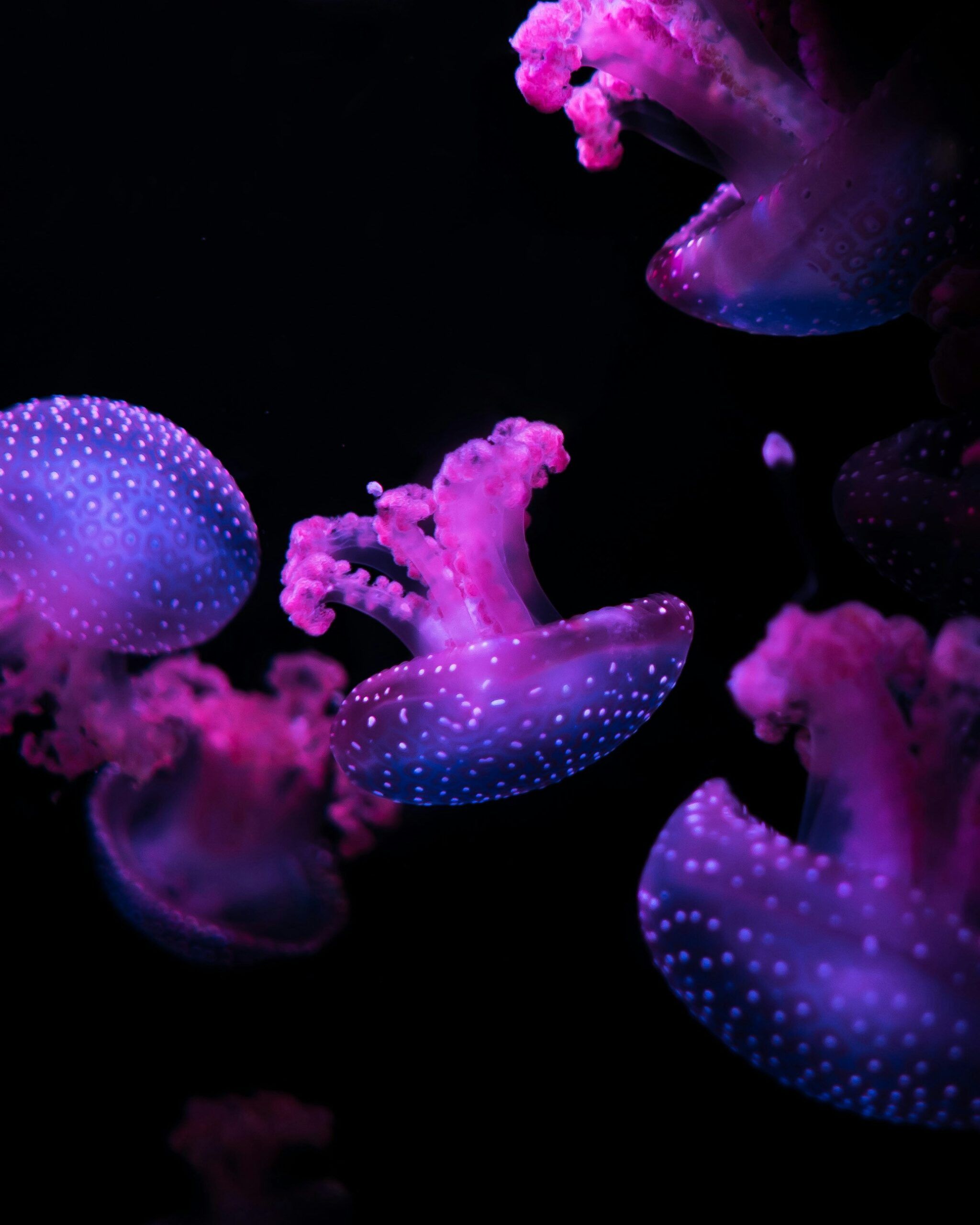Purple is a relatively common color to see in our everyday lives; we see it on t-shirts, flowers, wall colors, shoes, and more. However, the color is much more rare in the natural world, especially when it comes to animals. Here are eight rare purple animals from across the globe.
8. Violet-Backed Starling
The Violet-Backed Starling is a bird that inhabits the forests’ edge in sub-saharan Africa. At about 6.7 inches long, the males of this species fashion glistening purple on their heads and backs. This deep shade of purple brightly contrasts the white on their stomach.
Like many bird species, the male Violet-Backed Starlings are brightly colored while the female birds are a more non-descript brown color because it is the males who attract the female.
7. Purple Sea Slug
At around 3 inches long, the Purple Sea Slug can be found in shallow waters across much of the Indo-Pacific.
The Purple Sea Slug may be small but it is one of the most colorful animals in the world. Varying in color, some of the Purple Sea Slugs sport a more lavender hue whereas others are more of a bright purple. As the Purple Sea Slug lives in shallow water and coral reefs, you can spot one of these rare purple animals if you go snorkeling or scuba diving.
Read More: 10 Rarest Albino Animals from Around the World
6. Yellowstriped Fairy Basslet
The Yellowstriped Fairy Basslet is a species of fish that can be found in coral reefs across the Indo-Pacific. Up to 4.7 inches long, the fish is a bright hue of purple, often with a vibrant yellow stripe.
Though the fish’s vibrant colors make it quite beautiful, it is challenging to keep in captivity. The species is sensitive to changes in its environment so it has to be closely monitored. Many Yellowstriped Fairy Basslets also do not eat in captivity making it even more difficult. This however makes them one of the most rare purple animals from around the world.
5. Purple Emperor
The Purple Emperor is a breed of butterfly that inhabits densely wooded areas from Europe to central and western China.
With a male wingspan of 2.8 to 3.1 inches and a female wingspan of 3.1 to 3.6 inches, both have similar dark brown or black coloring. However, it is only the male Purple Emperors that have an iridescent sheen that makes their wings appear purplish blue in certain lights. As they are only found in certain parts of the world and only the males display a hue of purple, the Purple Emperor is one of the rare species we found.
Read More: Did You Know These 10 Rare Dog Breeds
4. Blue Pleasing Fungus Beetle
The Blue Pleasing Fungus Beetle, at 0.5 to 0.8 of an inch, can be found in Colorado, Wyoming, Arizona, California, New Mexico, Kansas and Sonora, Mexico. Though the name suggests that this species is blue, most of these beetles are closer to a lavender color.
Unlike many insects, Blue Pleasing Fungus Beetles change color as they age. The younger ones are a brighter color and as they grow older, the color fades, eventually becoming gray.
3. Purple Sea Star
The Purple Sea Star, which can be found in the pacific ocean, is about eight to 20 inches. Though the star can be a brown, yellow, or reddish color, it is most often a deep purple.
The Purple Sea Star has a lifespan ranging from 4 to 20 years. It is able to live this long because the sea star does not have many predators. Since the Purple Sea Star is on the list of rare purple animals, humans pose as the biggest threat wanting to collect them.
2. Magnificent Sea Anemone
The Magnificent Sea Anemone is usually between eight and 20 inches in diameter but can be up to 40 inches, inhabiting tropical and subtropical waters of the Indo-Pacific.
The anemone ranges in colors such as pink, green, and blue, but is most commonly found as purple. Its vibrant colors stand out in any coral reef with its column, the part with the tentacles, as its most notable feature.
Read More: 6 Rare Houseplants Everyone Wants to Find
1. Spanish Shawl
The Spanish Shawl, which can be found along the western coast of North America, is about 2.75 inches long.
The Spanish Shawl is one of the most rare purple animals, known for its extremely bright colors. Its body is a bright purple and covered with bright orange gills. The sea slug’s name not only comes from its color but also when it needs to escape a predator, it will contract and expand its body to move through the water. This movement looks like a shawl fluttering in the wind, earning its name as the Spanish Shawl.
